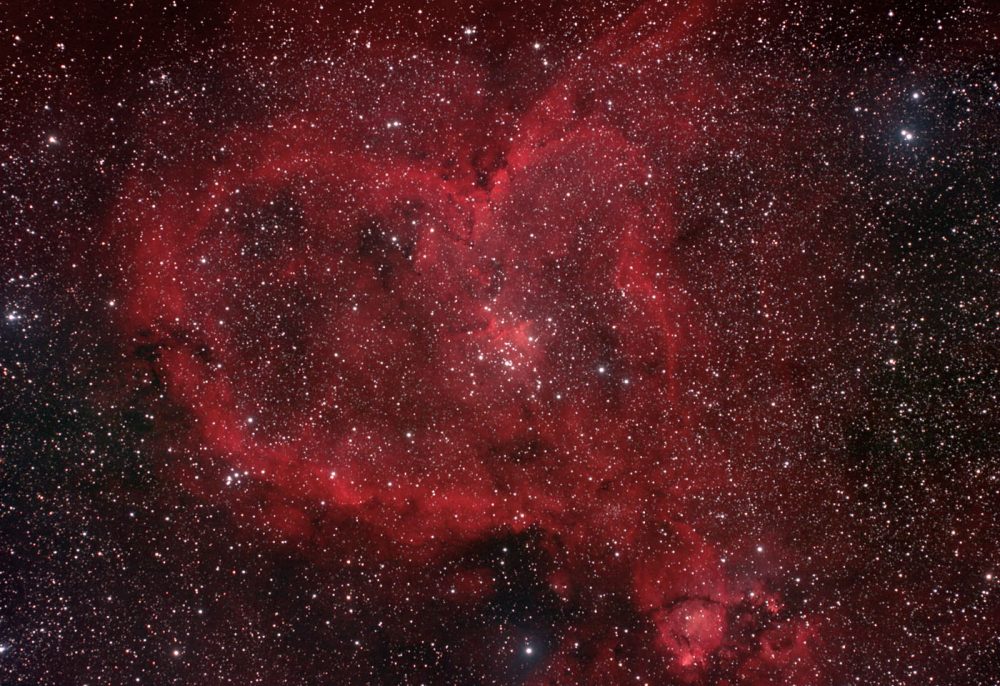Overview
- Object: Emission nebula
- Constellation: Cassiopeia
- Right ascension: 02h 33m 22s
- Declination: +61° 26′ 36″
- Apparent size: 150′ x 150′
- Apparent magnitude: 18.3
- Absolute magnitude: 6.5
- Radius: 165 light years
- Distance: 7,500 light years
- Designations: Heart Nebula, IC 1805, Running Dog Nebula, Sharpless 2-190, Sh2-190

General Facts
The Heart Nebula is an emission nebula located in the constellation of Cassiopeia, around 7,500 light years away from Earth. It has an apparent magnitude of 18.3 and an absolute magnitude of 6.5. Sometimes, it is known as the Running Dog Nebula because, when seen through a telescope, it looks a bit like a running dog.
The nebula was given its name the Heart Nebula because of its intensely red glowing gas and dark dust lanes that form a shape that resembles a heart symbol. It forms a famous complex known as the Heart and Soul with its smaller neighbour Westerhout 5, also known as the Soul Nebula, which lies just 2.5 degrees to the southeast.
The Heart Nebula is around 150 arcminutes in size and has been given the designation of Sharpless 2-190 in the Sharpless Catalogue, as well as IC 1805. The brightest part of the Heart Nebula has the designation NGC 896 in the New General Catalogue. It is classified separately because it was the first part of IC 1805 to be discovered.
The glow of the nebula comes from the radiation of a small open cluster of stars known as Melotte 15. The cluster contains very young, blue, hot supergiant stars that are about 1.5 million years old and is located near the nebula’s centre.
Melotte 15
Several of the bright stars in Melotte 15 have a mass almost 50 times that of the Sun, as well as many faint stars far less massive than the Sun. Melotte 15 once contained a microquasar, a radio emitting X-ray binary system, but the system was expelled from the cluster millions of years ago.
The Heart Nebula is located in the vicinity of Maffei 1 (PGC 9892) and Maffei 2 (UGCA 39), which are the brightest galaxies in the IC 342/Maffei Group — the nearest galaxy group to our Local Group.
The Heart and Soul nebulae shine bright in red light due to the emission of that specific colour of light by the excited nearby hydrogen gas and form a large star-forming complex in the Perseus Arm of the Milky Way. The region is barely visible in small telescopes.
The region of the sky that the Heart and Soul nebulae are in also contains several smaller nebulae, such as the Fish head Nebula. The region contains seven open clusters of young stars.
Image Sources:
- By Byronmhome – Own work, CC BY-SA 4.0, https://commons.wikimedia.org/w/index.php?curid=94441609